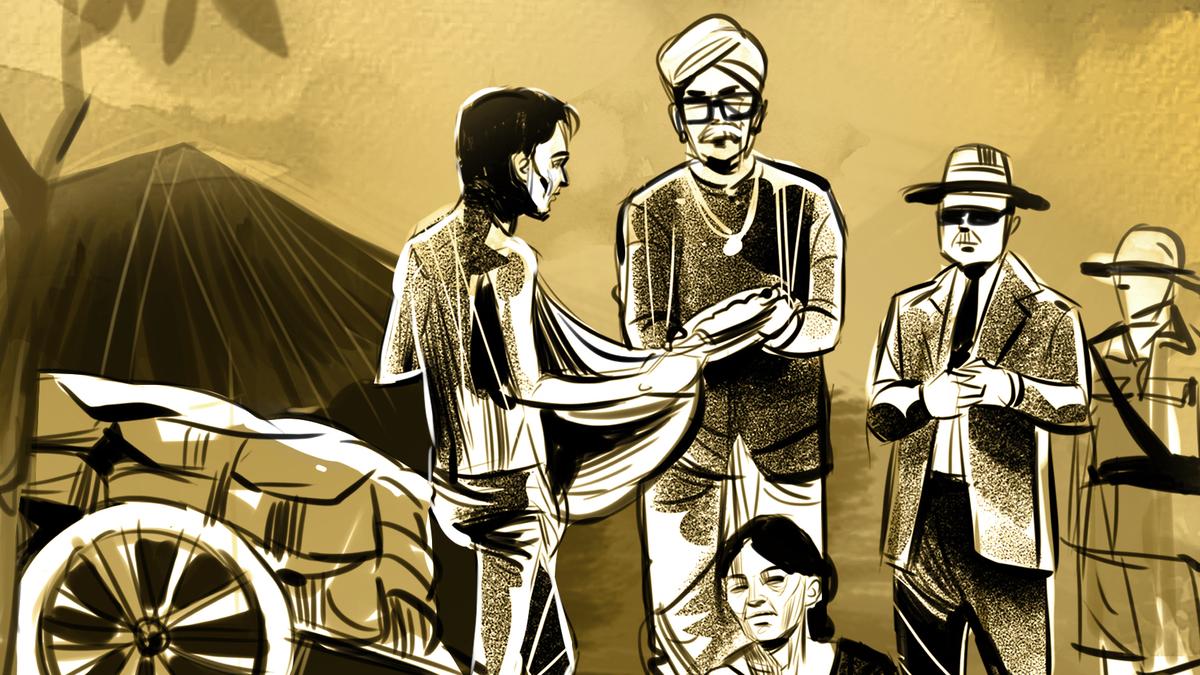
The Famine Code of 1914 set forth a method to handle fodder famine in Madras Presidency
The Hindu
The Famine Code of 1914 in the Madras Presidency detailed addressing fodder famine, including procurement, transport, and charitable relief.
The Famine Code of 1914 in the Madras Presidency included a detailed note on addressing fodder famine too. A fodder famine is a shortage of fodder. A perusal of the exhaustive document shows that Section 188 (3) of the Famine Code provided for appointment of an officer on special duty whose responsibilities included addressing the issue of fodder shortage.
This officer was tasked with going into three aspects. The first was to assess where, and to what extent, private stocks of fodder were available for purchase. He also had to ascertain the amount of grass available in reserved and unreserved land in the Presidency for cutting and bailing. The third was to find out what supplies could be obtained from similar areas outside the Presidency if the local supply was insufficient. “Simultaneously he should ascertain from the Collector of each affected district and from the Railway authorities concerned the probable amount of fodder which will have to be imported, the places at which the imported fodder will have to be laid down, and the means of transport available,” according to the document.
The code mandated that departmental cutting of grass in the areas selected for the supply of fodder should begin as early as possible, and if any difficulty was to be experienced in obtaining labour for cutting grass, the revenue officers should exercise their influence “in order to induce people to go on this work in sufficient numbers”. It suggested that steam baling should be resorted to in preference to hand-baling wherever the quantity of grass which could be collected in a pressing centre was sufficient to justify it. “The Railways should be requested to give preference to pressed over unpressed fodder in all cases where the latter may be offered for despatch,” it said.
According to the plan, the transport of fodder should begin at the earliest possible date in order to avoid congestion of traffic. If the total quantity of grass, which could be readily collected by departmental agency, was likely to fall short of the amount needed for the affected districts, the officer on special duty should consider the best way of supplying the deficiency by purchase through contractors. According to the Famine Code, to effect this economically and to prevent, by simultaneous purchases in different places, the raising of prices by dealers, the officer on special duty would, if necessary, be given the services of a sufficient number of responsible officers whom he would depute to localities in which he had reason to believe that grass was procurable.
These officers were to enter into contracts for the supply to the government of a fixed quantity of grass on the best terms obtainable. The contracts were to be arranged in such a manner as to enable each district to be supplied from the purchasing centre nearest to it. It was, however, open to the Secretary of State in Council to terminate the contracts by written notice.
“When purchases of grass have been made as aforesaid, the officer on special duty will inform the Railway authorities concerned of the quantities of grass which have to be carried from each purchasing centre, the stations of delivery, and the date from which operations may be expected to begin,” it added.
The Famine Code also addressed the issue of charitable relief societies. It said that when a charitable relief society was started — part of whose operations are to be directed towards the distribution of fodder — the officer on special duty should communicate with the officers of such a society and ascertain the localities in which they proposed to purchase fodder, the funds at their disposal, and the quantities which they hope to purchase. “This will enable the officer on special duty to arrange against unnecessary competition between the agents of the charitable relief society and his [officer] own agents,” the document said.

The Karnataka government has drafted a comprehensive master plan for the integrated development of Kukke Subrahmanya temple, the State’s highest revenue-generating temple managed by the Hindu Religious Institutions and Charitable Endowments Department. The redevelopment initiative is estimated to cost around ₹254 crore and aims to enhance infrastructure and facilities for devotees.












